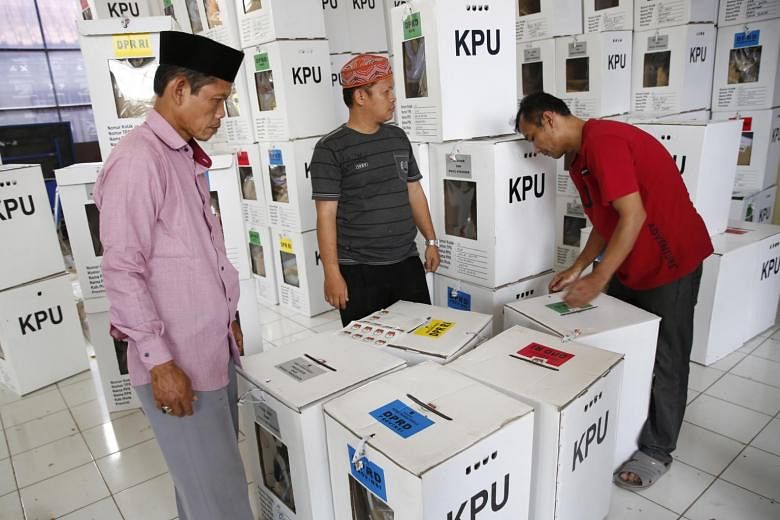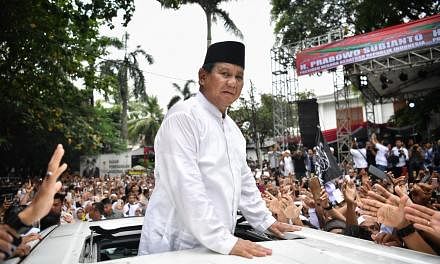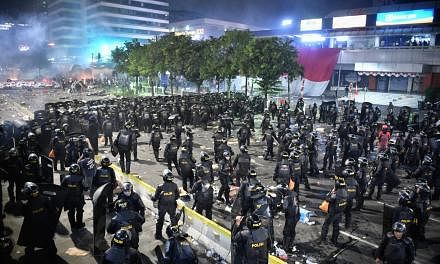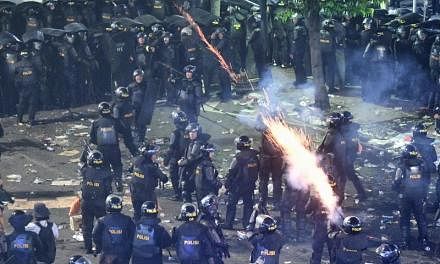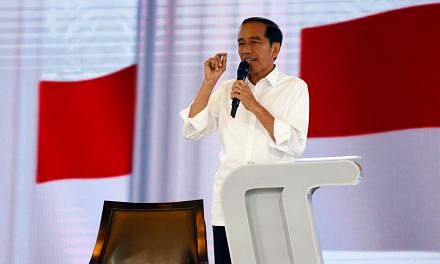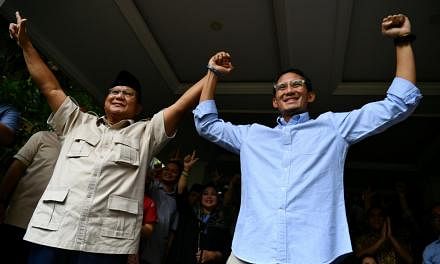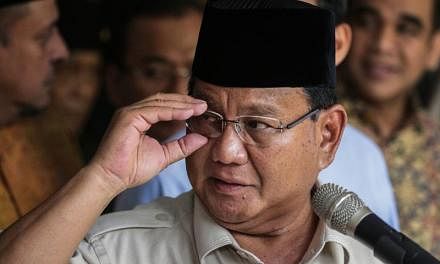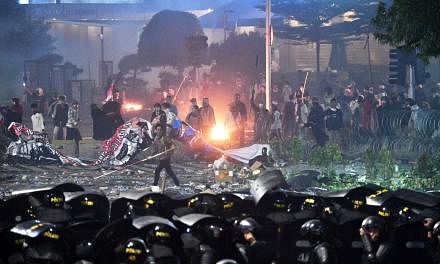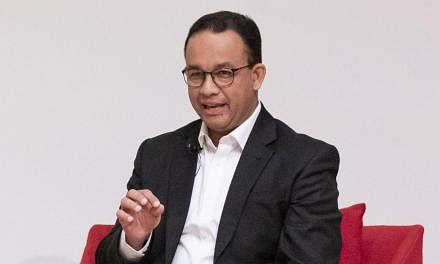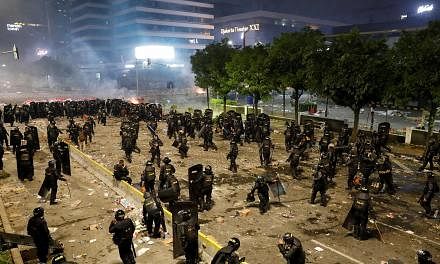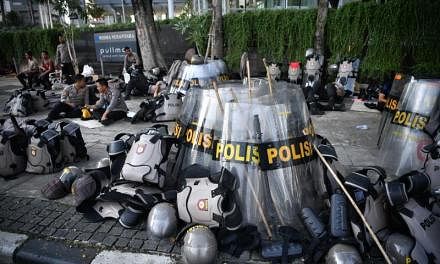JAKARTA (THE JAKARTA POST/ASIA NEWS NETWORK) - Eight reputable pollsters grouped under the Indonesian Association for Public Opinion Surveys (Persepi) have defended their "quick count" methodology amid allegations they were biased towards President Joko Widodo.
In a first, the pollsters, who have almost accurately predicted all election results in the past, held a joint event in Jakarta last Saturday (April 20) where they invited the media and the public to examine their methodology as well as raw data from polling stations they surveyed on election day.
The press briefing came only a day after presidential candidate Prabowo Subianto lashed out at the pollsters, calling them liars and asking them "to move to the Antarctic to spread lies to the penguins".
Quick-count results conducted by the pollsters have shown that the Joko-Ma'ruf Amin pair is likely to win the presidential race with 54 to 55 per cent of the vote against Prabowo-Sandiaga Uno's 45 to 46 per cent.
Mr Prabowo has strongly rejected the results, saying that based on the vote count conducted by his own team, he had won by 62 per cent. He claimed to have conducted a real count of data from more than 320,000 polling stations.
Persepi head and Centre for Strategic and International Studies (CSIS) executive director Philips J. Vermonte said the press briefing was held in response to attempts by certain groups to de-legitimise the scientific method used in counting votes.
"We invite the public to a scientific debate that is evidence based. Through the data expose, you can see how we did the quick counts. We'll arrange it like a bazaar for you to see our data closely. There are photos of C1 forms. We went through the process transparently," he told reporters.
The pollsters, he said, would also upload their data onto their respective websites so that the public could access and examine them. "It will be on each pollster's website. Some have started uploading them."
Quick counts were first held in the 2004 general election, when for the first time, Indonesians directly elected their president. Unlike exit polls, in which pollsters asked people who they voted for, a quick count is conducted by randomly sampling data (C1 form) from polling stations across the country.
The polling stations were selected proportionally in each province. Pollsters survey between 1,500 and 5,000 polling stations. The bigger the sample, the smaller the margin of error of the survey.
Professor Asep Saefudin, a statistics expert from Bogor Agricultural University (IPB), explained that a quick count was the simplest method in statistics. "It is like taking probability from a basin, but it needs randomisation," he said.
Mr Vermonte said the pollsters were ready to be scrutinised.
"We invite the people who called us untrustworthy pollsters to our offices. There is nothing to hide. We also want those who claim to have different results to release their data to the public," he said.
The CSIS and Cyrus Network have made their data accessible to the public via http://103.229.72.224:10088/esaksi/admin/loginct. The public can enter the page by inputing "view96" as a username and "VW7407" as its password.
On that page, visitors can trace C1 forms obtained by the pollsters from 2,002 polling stations in 34 provinces. The study involved at least one million voters and used the multi-stage random sampling method with a trust level of 95 per cent and margin of error of +/-1 per cent.
The Prabowo-Sandiaga legal team reported some survey institutions to the KPU last Thursday, accusing them of spreading fake news and hoaxes, namely LSI Denny JA, Indo Barometer, Charta Politika, Saiful Mujani Research & Consulting (SMRC), Poltracking and Voxpol.
"We assume these institutions received orders to carry out a quick count like this," said team coordinator Djamaluddin Koedoeboen last Thursday as quoted by kompas.com.
The Prabowo camp has largely referred to an incomplete census of the election results of all the polling stations for their claimed victory.
Mr Prabowo's supporters, for example, have referred to the vote count conducted by application AyoJagaTPS.com, which indicates that Mr Prabowo is leading Mr Joko by more than a 25 per cent margin.
AyoJagaTPS.com founder James Falahuddin claimed the data obtained by the application was valid, as it was based on the real count of C1 forms uploaded by its users. "Our data is valid... the uploader should input their identity number plus their e-KTP photos," Mr James said.
It is not clear how many C1 forms it has collected and whether the application's users are dominated by Prabowo supporters.
Other than AyoJagaTPS, there is also vote-counting device site Jurdil 2019, which claims a Prabowo victory with 60.4 per cent of the vote as of 5pm last Saturday. This site was also promoted by Mr Prabowo's supporters on social media as the most appropriate reference for vote counting.
Mr Prabowo campaign spokesman Andre Rosiade declined to respond to the pollsters' challenge, saying that they used different data. He claimed to have counted election results from more than 500,000 polling stations.
"It's not apple to apple," he said. "If they want to challenge us, they need to go to the Constitutional Court because out data should be the same as the KPU."
